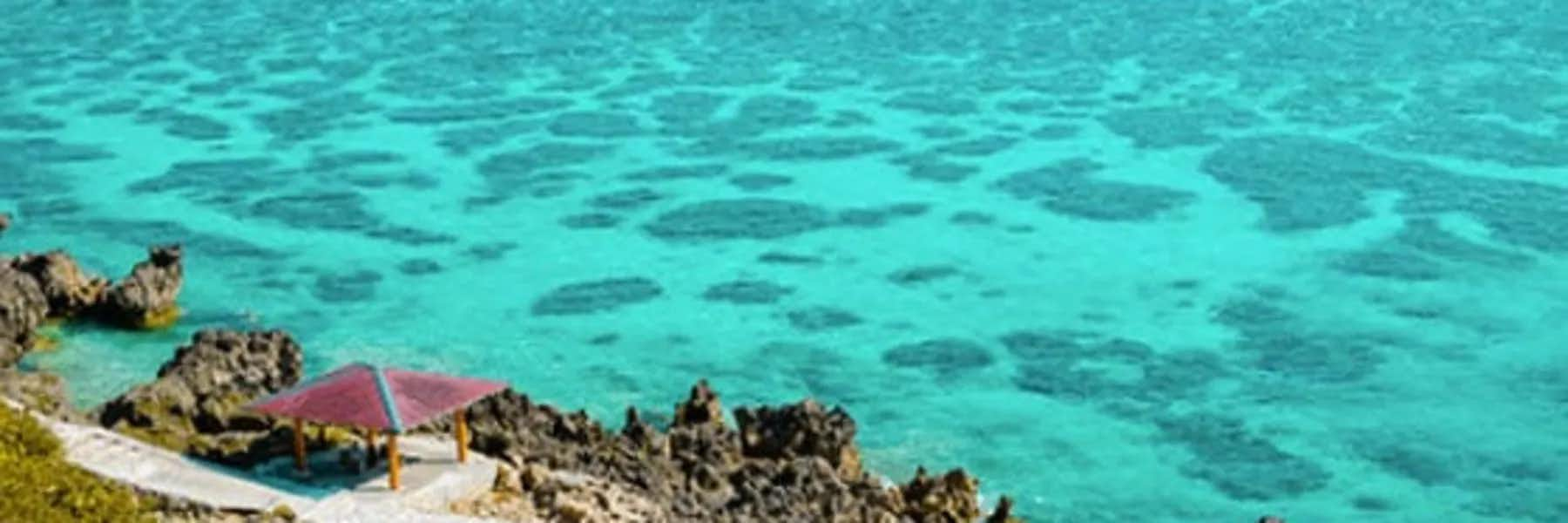by Carol Parks
When it came to tropical islands, I always thought of myself as a Caribbean type. Close by… beaches…palm trees…warm…decent plane fares.
That is, till I discovered this gem of an island in the Pacific.
Okinawa mixes Japanese culture, a large expat population, and a Pacific island vibe into one distinct package. What’s more, it’s safe enough to leave your doors unlocked, walk around after dark, and drive without worrying about road rage. A sense of quiet respect permeates the island. Okinawa also boasts a warm tropical climate. Temperatures rarely drop below 60 F.
Honestly, I never would have found this gem if it weren’t for a family member moving there. Now, I just got back and I’m already making plans to return.
Japanese Culture, Tropical Island Style
Okinawa Prefecture is the southernmost of the Japanese archipelago (prefectures are like a U.S. state, but more beholden to the federal government). Japan’s islands cover a distance of 1,900 miles, north to south. Okinawa is 930 miles from Tokyo.
Some 50,000 to 80,000 Americans live in Okinawa. Many are military service members or their dependents. A good number of the island’s expats are civilians or retired military who now call Okinawa their permanent home.
Like the four fishing buddies I met at the beach. They’ve been there since the 1980s and have no intention of leaving. Or the family of seven who moved there with the military, then decided to stay permanently, now making a living teaching English and music.
What do I like most about this subtropical Japanese playground? Many things, but I’ll list seven.
1. Breathtaking beaches, coral reefs, warm breezes.
Pristine beaches are everywhere. Most are secluded and empty—all yours to enjoy. If active sports are more your thing, Okinawa offers great scuba diving and snorkeling, parasailing and paragliding, stand-up paddle boarding, kayaking and canoeing, fishing…and dolphin- and whale-watching.
2. Stunning rock formations.
Cape Manzamo in Onna is easily my favorite. Its “elephant trunk” is nothing short of amazing. Many seascapes in Okinawa boast startling rock formations forged by volcanic lava flows meeting the ocean.
3. Unpretentious and minimalist attitudes.
Laidback island life in Okinawa is a welcome escape from pressure to keep up with the Joneses. Most people drive small 10- or 15-year-old, $2,000 cars. Their goal is to get from Point A to Point B, not flaunt a status symbol.
Filling houses with needless stuff isn’t a thing either. The focus is on simple, healthy living, not on possessions.A sense of quiet respect permeates the island.
4. A foodie’s dream, obesity not included.
Tiny cafés dot the countryside. And delis offer a mind-bending range of delicious Japanese cuisine. Once you’ve eaten real Japanese ramen, you’ll never buy cheap American version again. The flavor is incomparable. While probably not the world’s healthiest food, you could eat it every day and not get sick…unlike the carcinogenic gob that passes as “ramen” in the West.
Then there’s yakitori—skewered Japanese chicken grilled over a charcoal fire… available from grocery delis and street vendors. It’s delectable.
Naturally, you also have access to a nearly endless array of the daily catch at impressive fish markets, plus tempura, teppanyaki, sushi, sashimi, and more.
5. Vending machines on every block.
Craving a coffee, soda, tea, beer, or just about any other drink? No problem. Stroll down the block or stop along the road, insert coins, and presto—it’s yours. Always nearby, the selection is truly amazing. You’ll see them at parks, playgrounds, and in every neighborhood. They’re far more convenient than a convenience store.
They also extend the vending machine concept to ordering fast food. That’s handy, as there’s no Japanese required.
6. Fascinating culture.
Gone are the days of traditional kimonos. The Japanese now wear typical Western clothing, emphasizing covered arms and legs. But there’s far more to their culture than clothing. It’s wrapped up in their language, food, history, bathing customs, bowing, and more.
Bowing seemed strange to me at first. But I quickly discovered its practical uses.
At the airport, I wasn’t sure if I was at the right gate. I approached two Japanese women. Three words into my first sentence, it was clear they didn’t understand a word of English. They shook their heads and gestured. A simple bow excused me (and them) from this awkward situation.
Bows can mean please, thank you, goodbye, what-have-you… And they’re more readily understood than spoken English.
7. 100 yen stores.
Daiso, the Japanese version of the dollar store, makes ours look downright cheap and full of low-quality Chinese-made junk.
100 yen stores sell higher-quality items, with a selection that blows ours away. One I visited was a two-story establishment similar to U.S. department stores. I bought items I’d have to pay five times as much for in the States. It certainly helps offset the somewhat higher cost of housing in Japan.
Intrigued? A visit to Okinawa is well worth adding to your bucket list.
Related Articles
Teach English in Japan: From Jobless Solo Traveler to Freelancing Whiz
